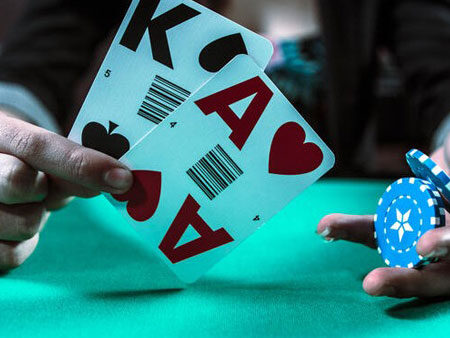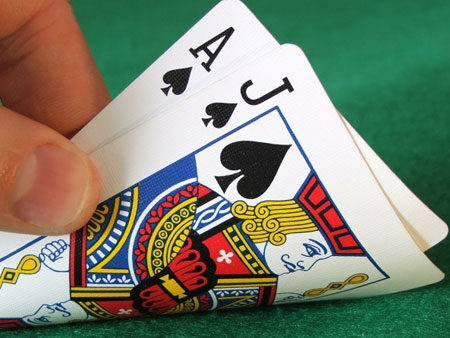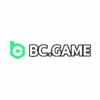Blackjack, a cornerstone of casino gaming, blends skill, strategy, and chance, offering players a thrilling challenge against the dealer.
Mastering its nuances not only enhances enjoyment but significantly boosts the chances of success.
Keep reading to learn how to play blackjack the right way!
Key Takeaways
- Understand Card Values: Grasping card values is fundamental, with Aces being flexible in value, face cards worth 10, and other cards holding their face value;
- Learn Basic Strategy: Employing a basic strategy can minimize the house edge, guiding when to hit, stand, double down, or split pairs;
- Familiarize With Variants: Exploring different blackjack variants enriches the playing experience, each with unique rules and strategies;
- Practice Makes Perfect: Utilizing online platforms for practice sessions helps in honing skills without financial risk;
The Blackjack Basics: An Overview
At its core, blackjack is a card game where the main objective is to beat the dealer’s hand without exceeding a total of 21. Players and the dealer are dealt two cards initially.
Players can then choose to “hit” (draw more cards) or “stand” (keep their current hand), among other strategic decisions, to achieve a hand closer to 21 than the dealer’s hand without going over.
Card Values in Blackjack
The value of each card in blackjack is essential to the game, as the total value of your hand determines your actions and chances of winning. Here’s a simple breakdown of card values:
| Card Type | Value |
|---|---|
| Number Cards (2-10) | Face value (2-10 points) |
| Face Cards (J, Q, K) | 10 points |
| Ace | 1 or 11 points, whichever benefits the hand more |
An Ace is unique as it can be worth either 1 point or 11 points, depending on which value benefits the player’s hand more.
For instance, an Ace can be worth 11 points if it does not cause the player to bust (go over 21), making it a highly versatile card in the game.
Understanding the Table
The blackjack table, whether in a land-based casino or an online blackjack platform, is designed to facilitate the game between players and the dealer.
Land-based Casino Blackjack Table:
- Layout: Typically semi-circular, accommodating up to 7 players. The dealer stands on one side facing the players.
- Betting Spots: Marked areas (circles or squares) where players place their bets.
- Dealer’s Area: Includes the chip tray, the shoe (for holding decks), and the area for the dealer’s cards.
- Player’s Area: Each player’s space includes areas for the player’s cards and betting spot. Some tables may also have spaces for insurance bets or side bets.
Online Blackjack Table:
- Virtual Layout: Simulates the real blackjack table with graphics depicting the betting spots and dealer’s area.
- Interactive Elements: Players interact through buttons for actions like ‘hit’, ‘stand’, ‘double’, ‘split’, and to place bets.
- Information Displays: Online tables often display rules, payouts, and sometimes the number of decks being used.
Understanding the table is crucial for making informed decisions during gameplay, from placing bets to executing game strategies.
How to Play Blackjack [Step-By-Step]
1. Starting the Game:
Each player places their bet in the designated area. The dealer then deals two cards to each player and to themselves, one of the dealer’s cards is face up (upcard) and one is face down (hole card).
2. Player Decisions:
- Hit: Request another card if you believe it will bring you closer to a total of 21 without busting.
- Stand: Keep your current hand and end your turn.
- Double Down: Double your initial bet in exchange for one additional card, after which you must stand.
- Split: If you have two cards of the same value, you can split them into two separate hands, placing an additional bet equal to the first.
- Surrender: In some variations, this blackjack term means you can forfeit half your bet and end your hand immediately.
3. Dealer’s Turn:
After all players have made their decisions, the dealer reveals their hole card. Dealers must hit on 16 or less and stand on 17 or more.
4. Outcomes:
- If your hand exceeds 21, you bust and lose your bet.
- If you have a higher total than the dealer without busting, you win.
- If both you and the dealer have the same total, it’s a push, and your bet is returned.
- Achieving a “Blackjack” (an Ace and a 10-valued card) typically pays 3:2.
Payouts:
Winners are paid out based on their bets and the outcome of their hands.
Blackjack payouts are determined by the type of bet placed and the outcome of the hand:
- Standard Win: Winning with a hand that is closer to 21 than the dealer’s hand typically pays out at a 1:1 ratio. This means you win the same amount as your bet.
- Blackjack: If you hit a blackjack (an Ace and a 10-value card as your initial two cards), the payout is usually 3:2, meaning you win 1.5 times your bet. Some tables may offer a 6:5 payout on blackjack, which is less favorable to the player.
- Insurance: If the dealer’s upcard is an Ace, players can take insurance, a side bet that the dealer has blackjack. The insurance bet pays out at 2:1 if the dealer does indeed have a blackjack but is generally considered a poor bet due to the high house edge.
Blackjack Playing Scenarios
- Scenario 1: With a hand totaling 12 to 16 (considered a “stiff” hand), whether to hit or stand depends largely on the dealer’s upcard.
- Scenario 2: Holding a “soft” hand (any hand using an Ace as 11), players have a safety net since the Ace can convert to 1, reducing the risk of busting when taking an additional card.
- Scenario 3: Doubling down is most effective when holding a total of 10 or 11, given the higher likelihood of ending with a total of 20 or 21.
The Most Effective Strategies for Blackjack
Implementing strategies in blackjack can significantly reduce the house edge and increase your chances of winning:
- Basic Strategy: This involves making the statistically optimal decision for every hand combination against every possible dealer upcard. Basic strategy charts are available and highly recommended to minimize the house edge. The pro players we’ve discussed with often recommend memorizing the basic strategy chart.
- Card Counting: A more advanced strategy that involves keeping track of the high and low cards remaining in the deck. Card counting can give players a statistical edge over the casino but is discouraged and can lead to being banned from playing at casinos.
- Avoid Insurance Bets: As insurance bets have a high house edge, avoiding them is generally advised unless you’re an expert at card counting.
- Manage Your Bankroll: Set a budget for how much you’re willing to spend and stick to it. Avoid chasing losses by betting more than you can afford.
- Use Doubling Down and Splitting Wisely: These options can be advantageous when used in the right circumstances, such as doubling down on a total of 11 or splitting Aces and 8s.
Mastering blackjack strategies requires practice and discipline.
Starting with the basic strategy is advisable for newcomers, gradually moving to more complex strategies as you become more familiar with the game dynamics.
Blackjack Variants
Blackjack has evolved into various forms, offering players diverse gaming experiences. Some popular variants include:
- Classic Blackjack: The traditional form of blackjack played with one to eight decks.
- European Blackjack: Similar to classic blackjack but with two decks and the dealer standing on soft 17.
- Spanish 21: Offers more liberal rules, such as allowing players to double down any number of cards, and includes bonus payouts for specific hands.
- Blackjack Switch: Players are dealt two hands and have the option to switch the second card dealt to each hand.
- Double Exposure Blackjack: Both of the dealer’s cards are exposed, changing the dynamics of how decisions are made.
Each variant comes with its own set of rules and strategies, making it essential for players to familiarize themselves before playing.
Conclusion
Mastering how to play blackjack involves understanding the game’s basic rules, the strategic nuances of its variants, and making informed decisions based on your hand and the dealer’s.
Whether you’re at a land-based casino or playing online, blackjack offers a blend of skill, strategy, and luck, making it a perennial favorite among card game enthusiasts.












